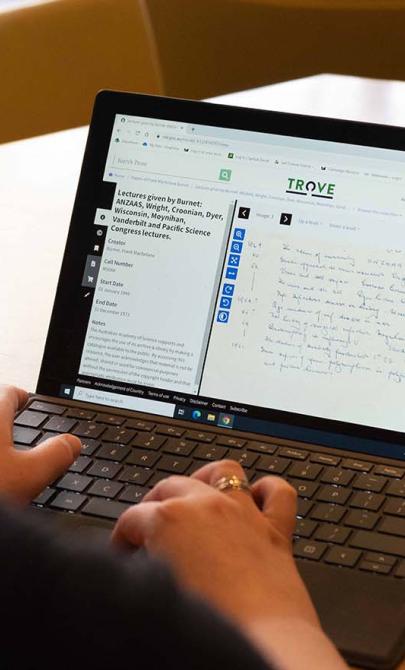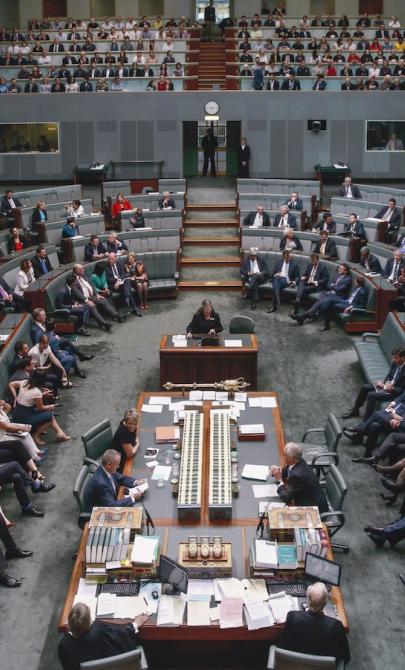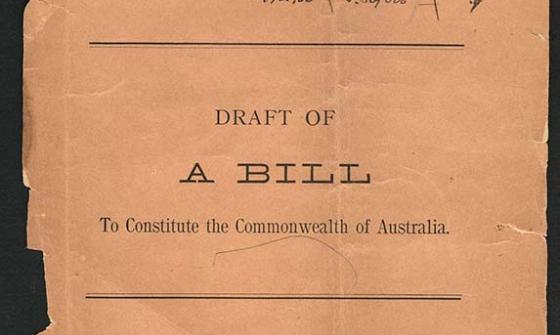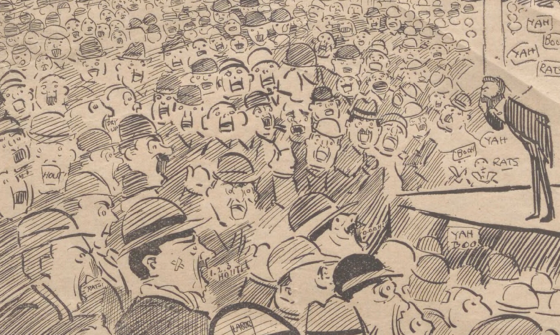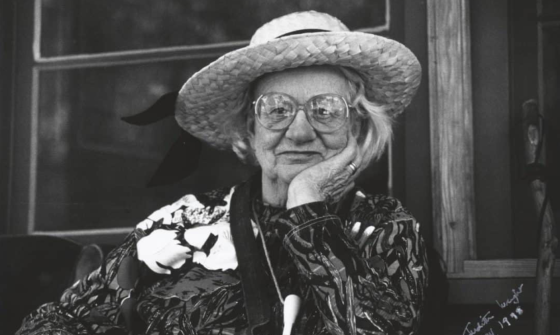United Nations research guide
Background
The United Nations (UN) was established on 24 October 1945 by 51 countries, with the stated goal of organising to: 'preserve peace through international cooperation and collective security'. 193 countries are now member states of the UN, all of which are listed on their Member States web page.
The UN maintains a system of depository libraries to make its documents and publications available throughout the world. The National Library has been designated as a full depository library, so we can provide access to an extensive collection of official UN records and publications as well as many publications about the UN.
United Nations Charter
This is the foundation treaty of the UN, as described in an Introductory Note to the UN Charter on the UN website.
The National Library holds a number of resources that provide description and commentary on the UN Charter.
The Charter of the United Nations : a commentary (3rd Edition) edited by Bruno Simma is the primary English reference book on the UN Charter, which can be found in the Main Reading Room. A Research guide on the Charter is online at the Dag Hammarsköld Library.
Search tip: To find library resources about the UN Charter, search the catalogue for the term "United Nations. Charter".
The full text of the UN Charter can be found on the United Nations website.
A digitised copy of the Charter can be viewed on the US National Archives website, with the original held in Washington DC.
Australia and the United Nations
Australia was one of the founding signatories of the Declaration of St James Palace in 1941. A proposal for the UN's organisational structure and procedures was presented in 1944 at the Dumbarton Oaks conference in Washington DC. Drafted by China, Great Britain, the Soviet Union and the United States, this proposal was submitted to the other UN countries for further discussion.
At the San Francisco conference of 1945, Australia's Minister for Foreign Affairs, Dr Herbert Evatt worked hard to make Australia an active voice for smaller nations, putting forward a number of amendments to the Dumbarton Oaks proposal. The Charter was altered to better reflect the concerns of the smaller nations, and enlarged the scope of the General Assembly.
For more detailed information on Australia's role in the founding of the UN, see the National Museum of Australia website.
Australia has been a Member of the UN since its formation in 1945. In 1948, Australia was elected to the Presidency of the General Assembly. Dr Herbert Evatt presided over the third session of the General Assembly as President for 1948-49.
Each year at the opening of the new session of the General Assembly the Australian Head of Government, or Head of UN delegation, speaks at the General Debate. In the General Debate each speeches are delivered by representatives of all Member States. You can view statements from Australia by browsing through past General Debates on the UN website.
Related links
The International Court of Justice is comprised of fifteen judges elected by the UN General Assembly and Security council, serving nine year terms.
Australia has been represented on the ICJ on two occasions: Sir Percy Spender who served 1958-1967 and James Crawford (PDF, 235KB) who was elected in 2015.
Australia's permanent delegate to the UN, Norman Makin, became the first President of the United Nations Security Council in 1946.
Australia has been a non-permanent member of the UN Security Council on five occasions: 1946-47, 1956-57, 1973-74, 1985-86 and 2013-14.
Information about Australia's membership of the Security Council from 2013-14 can be found on the Department of Foreign Affairs and Trade website.
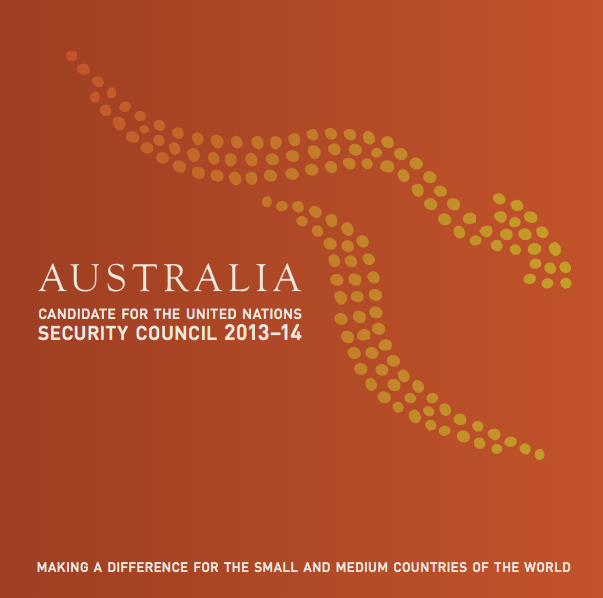
Australia : candidate for the United Nations Security Council 2013-14, Commonwealth of Australia, nla.gov.au/nla.cat-vn5156785
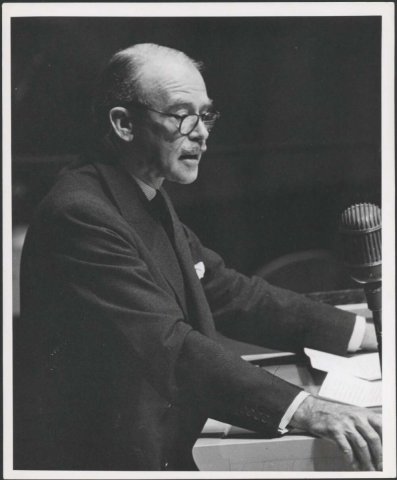
Mr. R. G. Casey addresses the United Nations General Assembly, New York, 1954, nla.gov.au/nla.obj-137165408
Mr. Richard G. Casey, Foreign Minister of Australia addresses the General Assembly. UN 44012 - United Nations, N.Y., 24 Sept. 1954.
The issue of most importance to Australia at the time was the growing influence of Communist states.
United Nations publications
United Nations publications are of interest to anyone researching international affairs including: peacekeeping, human rights and environmental cooperation.
The National Library holds three types of United Nations publications:
- Official records of the major organs, primarily the General Assembly and Security Council but also some conferences
- Sales publications including the major information titles of the UN, its subsidiary organs and committees
- Mimeographed documents, provisional uncorrected records of the major organs which were produced prior to official print records becoming available
Some categories of material not received by depository libraries are those designated limited or restricted to special interest groups. For indexes to many of these documents, see the Indexes to publications below.
Official records
| Record | Dates |
|---|---|
| General Assembly | 1946-2005, 2010-2011 |
| Security Council | 1946-1985 |
| Economic and Social Council | 1979-1990 |
| UN Conference on Trade and Development | 1956-1992 |
The library also holds publications of reprinted United Nations resolutions, including indexes, voting records and related material.
| Record | Dates |
|---|---|
| Series 1, Resolutions adopted by the General Assembly | 1973-1988 |
| Series 2, Resolutions and decisions adopted by the Security Council | 1946-1979 |
Sales publications
Serial print publications held by the library, including:
| Publication | Dates |
|---|---|
| Yearbook of the United Nations | 1946-2011 |
| Statistical Yearbook | 1948-2006 |
| United Nations Chronicle | 1976-2012 |
| Demographic Yearbook | 1948-1989 |
The library also holds a number of single works, such as:
- Human rights: a compilation of international instruments / Office of the UN High Commissioner for Human Rights
- Everyone's United Nations / UN Department of Public Information
Mimeographed documents
These individual documents are not recorded in the catalogue, but are held in off-site storage. They are filed as single documents (not bound), stapled together. The library stopped receiving these documents in 2005, after official documents were made available online.
They can be requested via the catalogue at United Nations Documents. When requesting these documents, you will need to provide the title, date and UN Document Symbol for each document. The UN Document Symbol can be found by using the Indexes to publications (see below).
The UN Official Document System (ODS) was first launched in 1993 and updated in 2016. It has full-text digital documents published from 1993 onward, including documents of the Security Council, General Assembly, Economic and Social Council and their subsidiaries. Other documents, such as administrative issuances, are also available.
This service also includes scanned documents published between 1946 and 1993, including all resolutions of the principal organs, all documents of the Security Council and Official Records of the General Assembly.
You can get these at home through Copies Direct or interlibrary loan.
UNiLibrary provides digital access to United Nations sales publications from 2013 onward. Publications are available in all official languages of the United Nations and have been authored by United Nations funds, agencies, departments and programs.
UNiLibrary can be accessed by the National Library’s eResources page, either in the library, or at home using your Library login. Simply visit our eResources portal and search for this resource under the Browse eResources tab. Resources are also available for document delivery to Australian libraries.
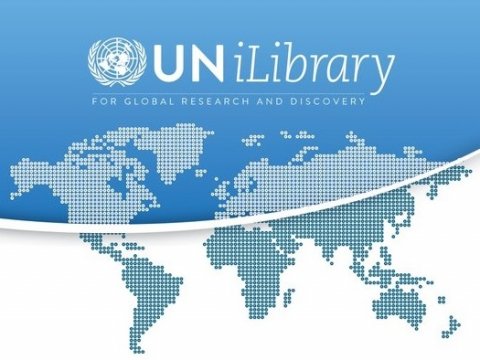
There are also many other UN resources and documents available online – an overview is available on the UN Library’s website.
Indexes to publications
Most official records and sales publications prior to 2005 can be found by searching for a title on the Library catalogue. Many of these are serial publications, so you will need to pay attention to the holdings list to see which years and issues are held in the collection.
Search tip: Browse UN documents in the Catalogue using an author search by UN body. Some examples are:
Print indexes
The library also holds a number of published print indexes to assist in searching for official records, prior to 2005.
| Index | Dates |
|---|---|
| United Nations documents index | 1950-1973 |
UNDEX. United Nations document index | 1970-1978 |
| UNDOC, current index : United Nations documents index | 1979-1996 |
| United Nations documents index | 1998-2007 |
| Index | Dates |
|---|---|
| General Assembly | 1950-2009 |
| Security Council | 1964-2009 |
| Economic and Social Council | 1952-2008 |
| Trusteeship Council | 1952-1993 |
| Index | Dates |
|---|---|
| Security Council | 1946-1991 |
| Economic and Social Council | 1946-1970 |
| Economic and Social Commission for Asia and the Pacific (ESCAP) | 1947-1978 |
| Index | Dates |
|---|---|
| The Complete Reference Guide to United Nations Sales Publications | 1946-1978 |
Official documents are each assigned a unique symbol by which they can be identified.
For example, the UN Document symbol:
S / RES / 1244 (1999)
would refer to the Security Council Resolution no. 1244, adopted in the year 1999.
For a detailed overview, refer to the guide to the UN Document Symbols on the Dag Hammarskjöld Library's website.
Useful tip
If you already know the UN Document Symbol, a quick way to access a document is to add the symbol after the following url: https://undocs.org/
For example: undocs.org/A/RES/67/1
(Note: This will not work for some older documents that have not yet been scanned.)
Most official documents can be accessed online, either via the Official Document System, or through the UN Library.
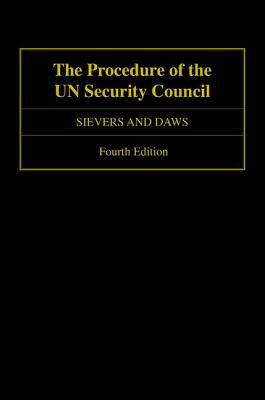
Loraine Sievers and Sam Daws, The procedure of the UN Security Council, Oxford University Press, nla.gov.au/nla.cat-vn6576301
The procedure of the UN Security Council explains the Council's role in its wider UN Charter context with detailed analysis of voting and decision-taking.
Updates are provided on the publisher's website.
Agencies, funds, and programmes
In addition to the principal organs of the United Nations, there are numerous specialised agencies, funds, programs and other entities which make up the wider United Nations.
Find a full list of these organisations on the United Nations website.
UN bodies publish flagship reports to share information about the work of the organisation with the public.
The following reports are available through the National Library's collections or the UNiLibrary database - to access UNiLibrary, visit our eResources portal and search for this resource under the Browse eResources tab.
| Title | Agency | In print | Online |
|---|---|---|---|
| Human Development Report | United Nations Development Programme (UNDP) | 1990-2013 | 1990-2015 |
| Industrial Development Report | United Nations Industrial Development Organization | 2002-2005 | 2013, 2016 |
| The State of Food and Agriculture | Food and Agricultural Organization (FAO) | 1947-2016 | |
| State of the World's Children | United Nations Children's Fund (UNICEF) | 1980-2003 | 2013, 2015, 2016 |
| State of World Population | United Nations Population Fund (UNFPA) | 1997-2014 | 2014-2016 |
| World Development Report | World Bank | 1978-2010 | |
| World Drug Report | United Nations Office on Drugs and Crime (UNODC) | 2013-2016 | |
| World Economic and Social Survey | UN Department of Economic and Social Affairs | 1994-2012 | 2009, 2013-2016 |
| World Economic Outlook | International Monetary Fund (IMF) | 1984-2016 | |
| World Economic Situation and Prospects (WESP) | Department of Economics and Social Affairs | 2001-2011 | 2011-2017 |
| World Health Report | World Health Organisation (WHO) | 1995-2013 | |
| World Investment Report | United Nations Conference on Trade and Development (UNCTAD) | 1991-2016 | 2013-2016 |
| World of Work | International Labour Organisation (ILO) | 1992-2015 |
1951 Refugee Convention
The office of the High Commissioner for Refugees (UNHCR) was created in 1950 following the Second World War. Its work is centred around the 1951 Convention Relating to the Status of Refugees - commonly known as The 1951 Refugee Convention.
The full text of the Convention, and details of its history, can be found on the UNHCR website.
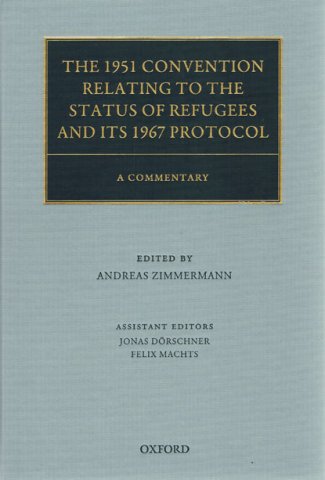
(2011), The 1951 Convention relating to the Status of Refugees and its 1967 Protocol : a commentary / edited by Andreas Zimmermann ; assistant editors Jonas Dörschner, Felix Machts, Oxford University Press, nla.gov.au/nla.cat-vn5383209
A history of UNDP
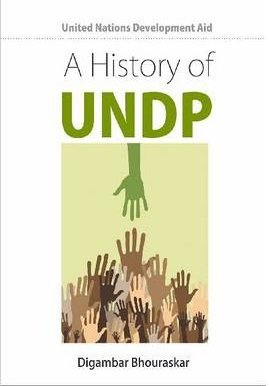
Digambar Bhouraskar, (2013), United Nations development aid : a history of UNDP, Academic Foundation, nla.gov.au/nla.cat-vn6450167
Child rights in the Commonwealth

(2009), Child rights in the Commonwealth : 20 years of the Convention on the Rights of the Child / edited by Purna Sen ; research by Christina Hajdu ; additional research and support by Jade Cochran, Commonwealth Secretariat, nla.gov.au/nla.cat-vn4904304
Searching the catalogue
Find resources about the UN in the Library catalogue using a subject search. Some examples are:
The Union Nations has six main bodies. For more information about each body, search under the following subject headings:
- United Nations General Assembly
- United Nations Security Council
- United Nations Economic and Social Council
- United Nations Trusteeship Council
- United Nations Secretariat
- International Court of Justice
General resources about the UN
Basic facts about the United Nations, Department of Public Information, print issues are held to 2000. The latest edition is available through the Library's subscription to UNiLibrary. You can access UNiLibrary by visiting our eResources portal and searching for this resource under the Browse eResources tab.
The Yearbook of the United Nations provides comprehensive coverage of the current activities of the UN and related organisations. The latest print issue is in the Main Reading Room, and online access is available.
The Journal of the United Nations is available in print at the Library, 1957 to 1993 and online from 2005 at the United Nations website.
Also see
Featured resource
The library holds an overview of site plans and cost estimates for the United Nations headquarters in New York, which has also been digitised for online access.
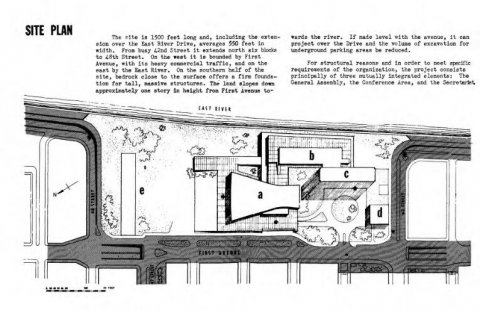
United Nations, Planning the permanent headquarters of the United Nations : a short summary, 1948, detail, nla.gov.au/nla.obj-50110669
